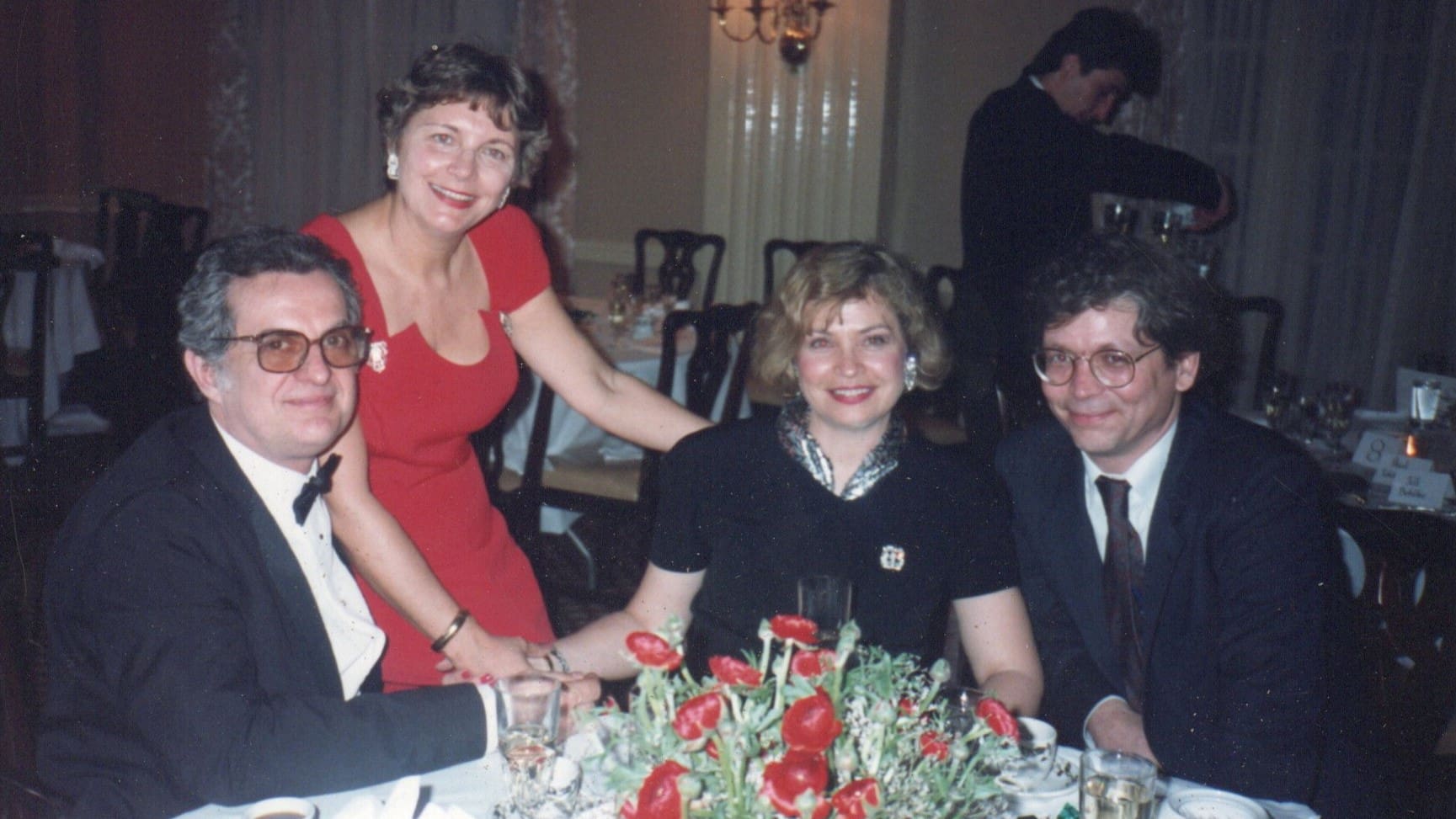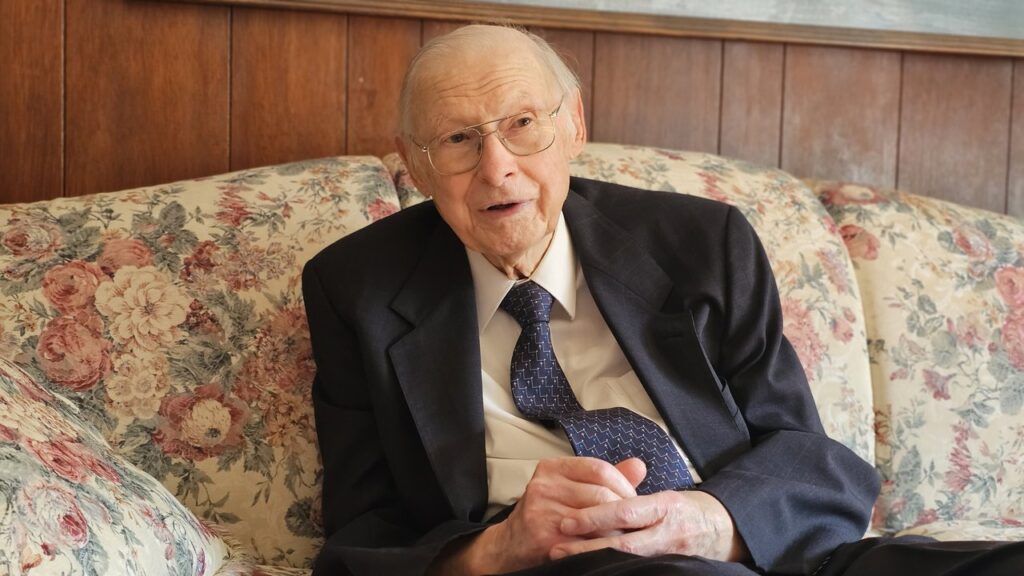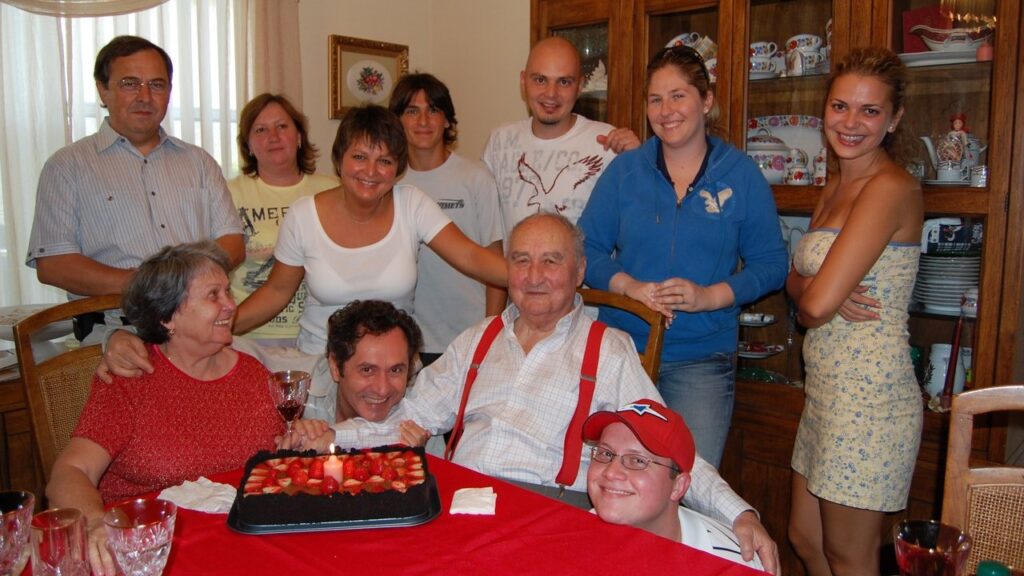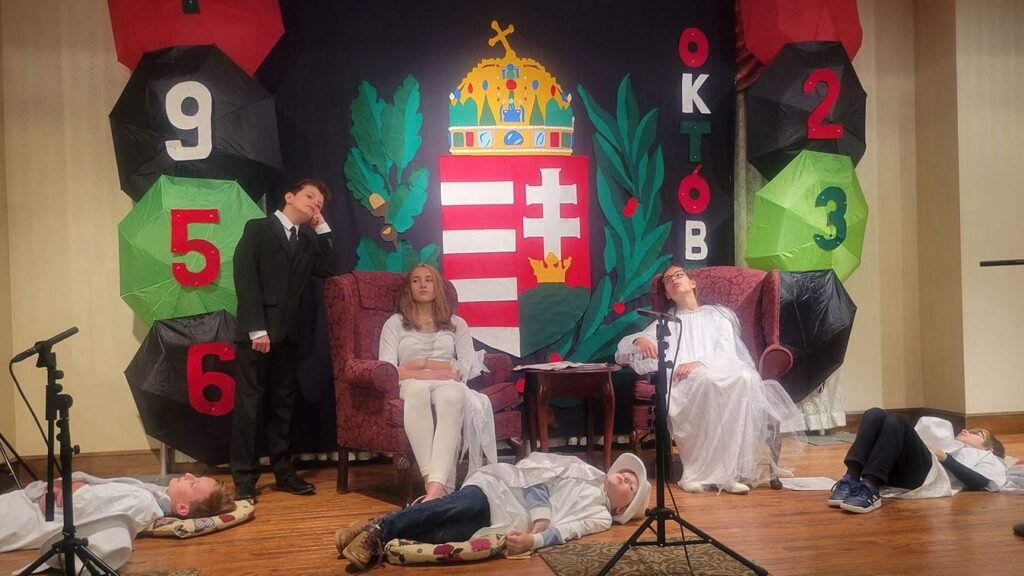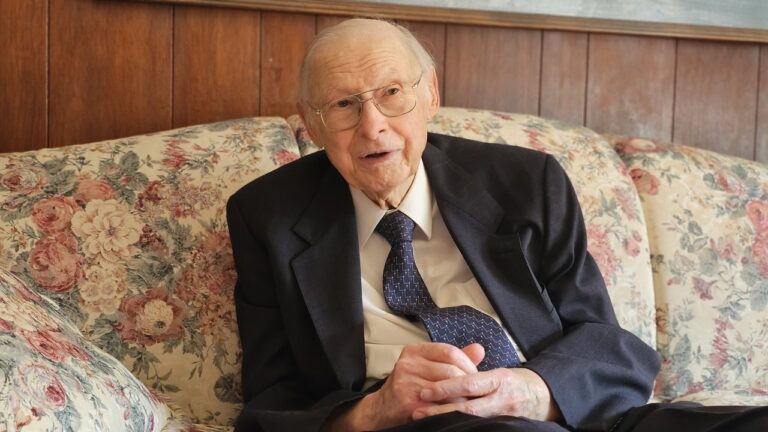Zsolt Szekeres was born in Germany in 1946, grew up in Argentina, spent about 30 years in Washington, DC, working for the United Nations, and moved to Hungary in 2000. He joined HHRF (Hungarian Human Rights Foundation) after a life-changing visit to Transylvania in 1975. He is a co-founder of the Hungarian American Coalition (HAC), board member of several Hungarian companies, and has been the president of HHRF since co-founder László Hámos passed away five years ago. He now sees his main duty as transferring his knowledge and network of contacts to the next generation.
***
Tell us briefly about your family and your childhood spent in Germany and Argentina.
My father, János Szekeres, is from Mezőmadaras, Transylvania (Romania). My mother, Magdolna Balogh, is from Kunszentmárton, Hungary. After the treaty of Trianon in 1920, my grandparents fled Transylvania, living in wagons in Szolnok, Hungary, until my grandfather got a job as a notary in nearby Kunszentmárton. The Szekeres boys courted the Balogh girls, resulting in one marriage: that of my parents. My family, including my older brother and sister, left Hungary in December 1944. I was born in Germany in 1946. As my father had his tooth knocked out during the war, the family was not admitted to Australia. Instead, my parents ended up going to Argentina, where we arrived in 1948 on a boat full of European refugees. The Hungarian immigrant community there was very large at the time, consisting of about 40,000 people. We were sent to the Hungarian boarding school run by nuns of the Mary Ward Congregation of Jesus in Platanos, close to Buenos Aires, where our classes were in Spanish in the morning and in Hungarian in the afternoon. We spoke Hungarian within the family. At the age of 18, I moved to Germany, and after various detours I finally landed in Washington, DC in 1971. I worked for the United Nations (UN) until the change of regime in Hungary in 1990.
How did you get involved with the HHRF, or rather its predecessor CHRR (Committee for Human Rights in Rumania), founded in 1976?
In 1975 we celebrated my parents’ wedding anniversary by taking them on a tour of Europe.
I was very shocked by what I saw in Transylvania.
It was a turning point in my life. By then, I was working at the UN and dealing with various human rights issues. When I came back from Transylvania, Hámos’ human rights movement seemed to take just the right approach. Jenő Brogyányi and Bulcsú Veress were the other two most important persons in the organization, along with Kinga Koréh, László’s first wife, Ági Bodnár, daughter of the founder of the Hungarian scout movement in exteris Gábor Bodnár. Emese Latkóczy, Károly Nagy, the Harkó couple, as well as the Zalaváry brothers also spent tremendous time and energy in our activities. László was born in Paris, grew up in New Jersey, and was a real New Yorker; he loved the city. However, all the institutions they wanted to reach were in Washington, and that geographical distance, especially in the 1970s, was a major obstacle. So I was able to play a bridging role in the organization: in fact, in the early years, HHRF’s Washington activities operated out of my office, first at the UN, and later at the company founded by my brother Szabolcs. Everybody at the UN knew about my Hungarian human rights work and supported me on condition that my UN work did not suffer. For a long time, I essentially worked two shifts. László’s bosses were not so understanding; they told him either to stop working for HHRF during working hours, or resign. He chose the latter, which caused him serious financial problems and contributed to the end of his marriage. I supported HHRF by providing accommodation, office space and equipment in Washington, DC. Incidentally, the organization’s above-mentioned name change from CHRR to HHRF took place when Miklós Duray was imprisoned as a result of the atrocities in Upper Hungary (Felvidék, Slovakia), and we started to mobilize. Anti-Hungarian abuses had existed in Slovakia ever since Trianon, but they were generally not as harsh as under Ceausescu’s dictatorship in Romania and its secret service (called Securitate), which arrested me once, too. Later, we expanded our activities to include Transcarpathia (Ukraine) and Voivodina (Serbia), and indeed all Hungarian minority issues.
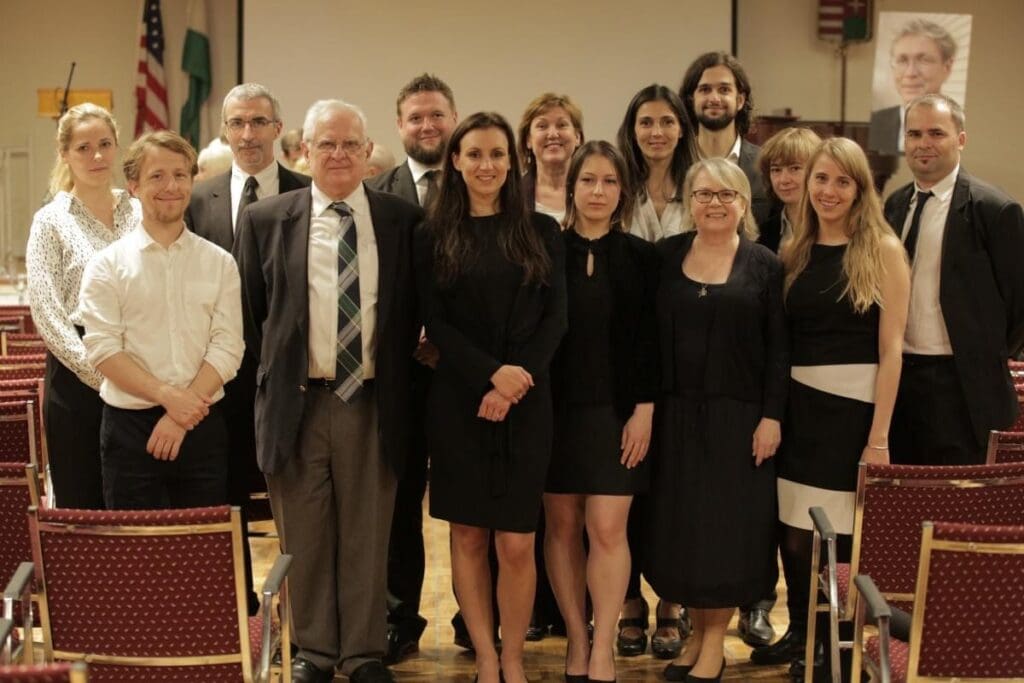
What was your role within the organization?
I was involved in producing various written materials and took advantage of my network of contacts in Washington, DC. The UN Information Office functioned as a mini-embassy and lobby organization; whenever the UN Secretary-General came to Washington, DC, he worked out of our office. If I had worked in the New York office, I would probably have only met him in the elevator, but thus we went to meetings and official visits together. I sacrificed my UN career for the HHRF, because after a while, in the UN, like in all large organizations, you have to move up the ladder, but I didn’t care about traveling around the world and pursuing new positions. I stayed in Washington, DC, until the regime change in Hungary in 1990. At HHRF, I was formally the treasurer—not a big job, since we had so little money. However, one of the Hungarian American community’s most successful fundraising campaigns was the one we organized with Edith K. Lauer, László and Emese in 1989. We raised almost 400,000 dollars in one night, which was then doubled by our main sponsor, Baron Hans Heinrich Thyssen-Bornemisza. This could not have happened without my contacts at the UN, specifically Kitty Lansdale, who at the time was in charge of organizing the annual UN fundraiser events in Washington, DC. She agreed to do the lion’s share of the logistics for our event, too, which laid the HHRF’s financial foundations for the next 40 years: we were able to buy an apartment in New York, which has been the HHRF’s office ever since.
How did HHRF and its membership work?
The HHRF has no membership; its income comes from donations. Over the years, thousands of people have contributed. Some were regular monthly contributions of just five or ten dollars; others sent occasional donations for campaigns. Having the people’s support behind us over the decades was a fantastic feeling. Unfortunately, the system of regular donations has changed nowadays, but at the time it was the biggest force that kept our movement alive: we were constantly writing reports on our activities and receiving new donations in response. After the mentioned fundraiser event, László and Emese received modest salaries, and we managed to get some support for the interns. But hundreds of people helped on a volunteer basis. One of László’s great talents was skillfully and tactfully asking people for favors. He put an enormous amount of work into building relationships. He had a database of thousands of names he could call upon.
HHRF’s activities were often very visible. László regularly participated in hearings at the U.S. Congress, where he excelled at presenting a credible case for the cause. He met with six U.S. presidents. In 1994 he attended three meetings with President Clinton and Vice-President Gore related to NATO enlargement. In 1990, HHRF organized a meeting at the White House between President George H. W. Bush and László Tőkés, the Hungarian Reformed pastor who sparked the 1989 revolution in Romania. After the fall of communism, we have continued to organize in-person meetings for leaders of the Hungarian minority communities with members of the Congress, the White House and State Department officials.
What inspired and motivated László in his work? Why was his voice accepted as credible?
László’s mother, Margit Sándor, was born into a noble family in Transylvania. His father, Ottó Hámos, was from Upper Hungary. But László’s motivation came not only from them; Béla Teleki also played an indispensable role. At the time, Teleki had a great influence on a number of young Hungarian Americans in New York. His political views, his former role in Transylvanian politics in the 1940s, his broad knowledge, and his wide network of contacts made him an invaluable resource and mentor. László and CHRR/HHRF represented a new type of Hungarian American organization. Until then, many of the older generation of Hungarian Americans active in émigré organizations did not speak or write English at a native level. By contrast, László’s English was native and flawless; he had studied political science and worked in the legal field; he was a stellar writer and editor. Additionally, as mentioned,
László Hámos had a real talent for inspiring others to help in the enormous task that he took on.
He also had a talent for cataloguing. Recently, we presented the Hungarian National Archives with documentation from the first 40 years of HHRF: hundreds of thousands of pages in 800 archival boxes. We also provided financing to get it professionally catalogued, making it accessible to researchers. This, too, is László’s legacy, and represents a key chapter in recent Hungarian history.
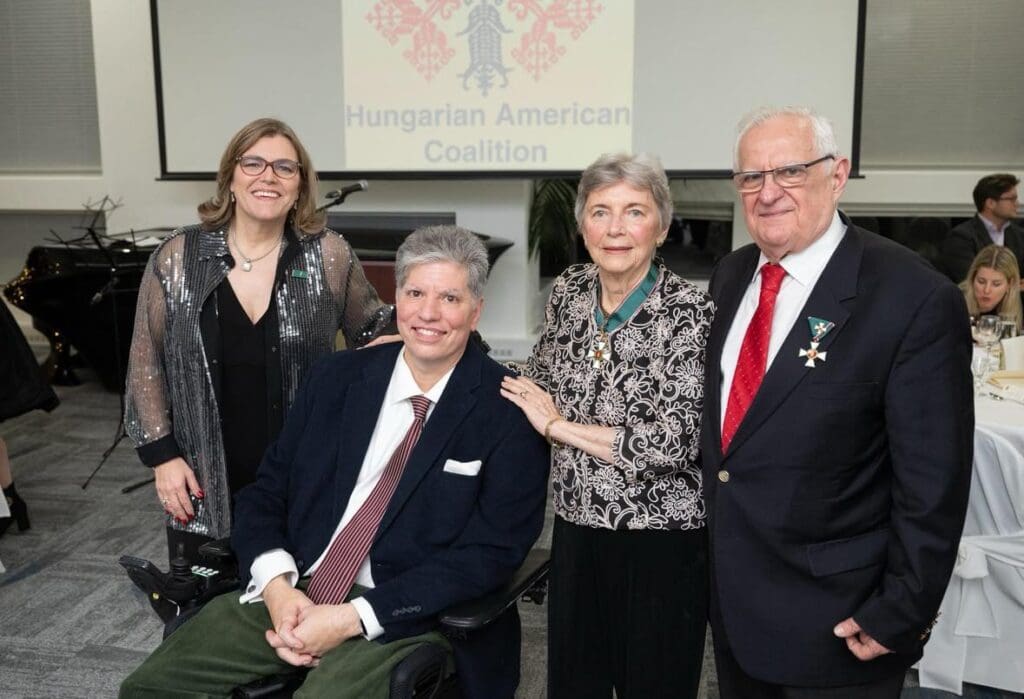
The HHRF website provides an impressive list of the organization’s wide range of activities. What do you regard as its most prominent activities or greatest successes?
Our biggest success came about after we lobbied to end Romania’s Most Favored Nation status, which it had enjoyed since 1975. The Romanian Government spent millions of dollars lobbying in their own favor, but in the end, we won, which surprised even the U.S. State Department. Another big moment was during the spring of 1990, when we took Senator Chris Dodd to visit Romania. We travelled all through Transylvania, accompanied by László Tőkés and others, and ended up at the U.S. ambassador’s residence in Bucharest. When the ambassador remarked that he had quite a problem with the Hungarian lobby in Washington, Senator Dodd laughed and replied: ‘Mr. Ambassador! Everyone at this table is Hungarian except me.’ The ambassador then realized the effectiveness of our role in Washington, DC. We also attended many international conferences where issues related to national minorities were on the agenda. For example, during the 1980s and early 1990s, we participated in every follow-up meeting of the Conference on Security and Cooperation in Europe (known as the Helsinki process). Unfortunately, today we no longer have the financial resources for this type of activity. We need to develop a new strategy to ensure our continuous presence, especially at forums where there are no minority representatives. Our most important task continues to be to build relationships and to keep minority issues alive at various international forums, but particularly in the U.S., within the U.S. administration, Congress and the Hungarian American community. Six years ago, and again a year later, we organized a visit to Washington for László Brenzovics, President of the Cultural Alliance of Hungarians in Transcarpathia (Ukraine), so that he could personally meet State Department officials. Last year, we invited Hunor Kelemen, President of the Hungarian Democratic Alliance of Romania, to give briefings for institutions and legislators in Washington.
You have been president of the HHRF since Hámos’ death, but you live in Hungary, where HHRF has an office as well. When and why did you move to Hungary?
During the years following the end of communist rule, I moved back to Hungary because of a project undertaken by our Washington consulting company, founded with my brother Szabolcs. We were asked by the government of József Antall (the first prime minister of democratic Hungary) to help reorganize the prime minister’s office. We worked for the Antall and the subsequent Boross governments for four years. After that, the Horn government did not use our services, because for some reason they thought we were politically oriented, even though our work was institutional development. Indeed, Antall preferred to hire people who had nothing to do with the previous communist regime, and all of us—Hungarians from the U.S. and Argentina—fit the bill. Initially, I took unpaid leave from the UN, but after a while I was no longer able to do both jobs on two continents, so I quit my UN job and moved to Hungary. It also made financial sense to handle most of HHRF’s administrative tasks in Hungary; the same was true for the Hungarian American Coalition (HAC). Today HHRF is run jointly with Emese Latkóczy, who lives near New York. We discuss all important matters together, and everyone on our team knows what to do. I travel to America quite often and I can still get things done there, but most administrative tasks take place at our affiliate office in Budapest, managed by Viktor Ivicsics. HHRF also has its own office in Washington, DC. A few years ago, the Hungarian government purchased the Kossuth House, located in Dupont Circle, then gave it to the Kossuth Foundation (where I’m also a board member) to use it rent-free for a 20-year period. HHRF and HAC are housed at the Kossuth House and help defray the Kossuth Foundation’s maintenance costs.
How would you differentiate the (human rights) activities of HHRF from those of HAC?
The role of HAC is quite different from HHRF’s: HAC is a big umbrella organization founded in 1990, while HHRF focuses on human rights issues. But as a member of the Coalition, HHRF can make proposals for activities HAC should pursue. Edith K. Lauer, who was HAC’s first president, has a great sense of diplomacy, plus a true American mindset combined with steadfast loyalty to the Hungarian nation. At HAC, she could look beyond personal politics to form a workable platform to credibly represent the very wide spectrum of HAC member organizations. For example, HAC played a long-running and successful role in advocating for Hungary’s NATO accession—a subject not directly related to HHRF’s mission. Similarly, activities related to the Washington Folklife Festival were more aligned with HAC’s mandate. Outreach programs funded by the U.S. State Department—such as study trips to the U.S. for Hungarian educators, mayors, and journalists—are also a better fit for HAC’s profile. At the same time, membership in HAC has given HHRF access to a wider pool of activities and individuals, so for example, HAC and HHRF cooperate in organizing the Human Rights Workshops. Recently, HAC and HHRF have been continuously cooperating also on programs to provide aid to Ukraine.
Has there ever been a conflict of interest or other challenges between the two organizations?
Not really. The real problem these days—as for most Hungarian American organizations—is to find new leaders among the next generation. We have a very promising intern, Luca Mórocz, a PhD student, who is working for HAC. I try to give her as much responsibility and freedom to operate as possible. I spend a lot of time with all of our interns, to show them how we operate and to pass on my network of contacts. I’m already 78 years old, and Emese will also retire one day. There are many talented people out there; for example, Endre Szentkirályi, HAC’s chairman of the board. HAC’s current president, Andrea Lauer Rice (Edith’s daughter) has tremendous energy and talent. We are very lucky with the Lauer family, as well as the Teleki family. We initially met Maximilian Teleki at a Human Rights Workshop, and he eventually became HAC president. It’s important that the new generation of leaders be U.S. citizens and strongly rooted in U.S. life—otherwise they cannot speak credibly on behalf of Hungarian Americans.
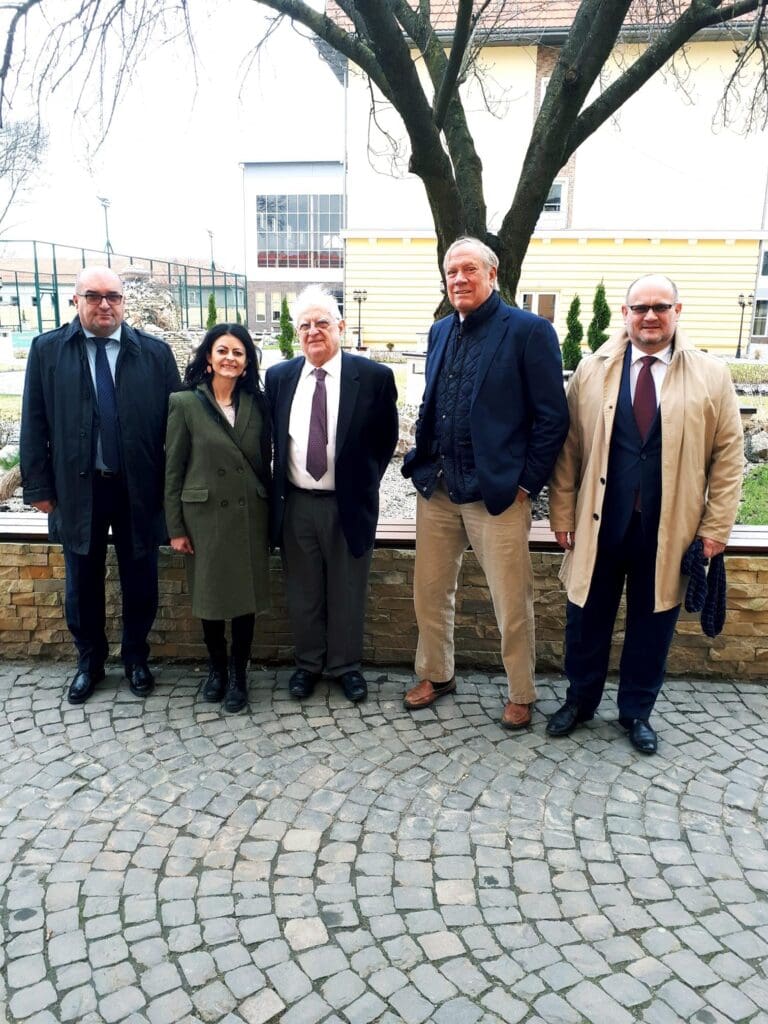
What are the main tasks of HHRF currently and its plans for the near future?
Since 1990, we have had to find new ways of explaining the issues. The communist dictatorships have collapsed, everything seems to be going fine, nice-sounding laws are being passed, but these are not being enforced, and in some cases the situation is deteriorating. The countries have European Union membership, and many border issues have disappeared thanks to the Schengen agreement, but problems remain. For example, in Romania, after numerous Hungarian church properties confiscated under communism were—amid delays and difficulties—returned to the churches, now the Romanian state is starting to reclaim some of these properties. In Slovakia, the shameful Benes decrees are still in force. In Vojvodina, everything seems to be fine on paper, but the reality is again different: Serbs are totally indifferent to Hungarians, but this also means they are not taken into account. Not to mention Transcarpathia.
These are all terrible situations, yet it is harder to use them to mobilize support.
So the work has not changed, but the emphasis has shifted. For example, the aspiration for some type of cultural or administrative autonomy in national minority regions is still not well understood in the U.S.: many think it means the creation of separate little republics. In fact, the autonomy which national minorities seek is no different from the principle of subsidiarity, which is an essential principle of the European Union. We have work to do also in this area. One plan is to revive our Minority Monitor publication, in a way that doesn’t just list grievances, but also provides news that affects the local communities. Our other task is to foster our contacts with the U.S. government, irrespective of party affiliation. Our most important job is to keep human rights issues on the agenda until they are resolved, or at least until all sides decide they are interested in resolving them. But as long as we don’t have a shared history book that all of the majority and minority national groups in our region consider as their own, these matters will not be resolved, and we have work to do…
Read more interviews with prominent Hungarian Americans:

